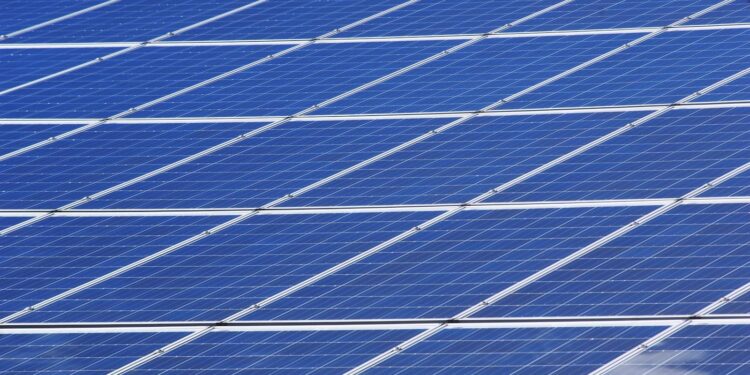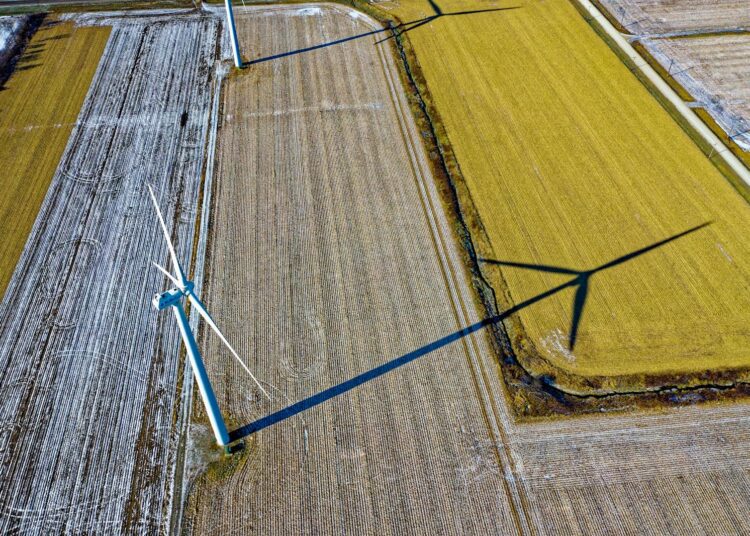In today’s rapidly evolving industrial landscape, managing energy consumption isn’t just an operational necessity—it’s a strategic imperative. Whether you’re running a data center, a large manufacturing plant, an industrial facility, overseeing land assets, mining operations, or managing aggregate concrete mixing sites, a comprehensive energy audit can unlock significant savings, improve efficiency, and reduce your facility’s carbon footprint.
In this post, we’ll explore why building energy audits are essential for modern industrial operations, the step-by-step process behind a successful audit, and how our free commercial industrial energy audit approach can help reduce operating expenses and boost profitability.
Why Perform a Building Energy Audit?
Energy audits are more than just an assessment; they are the key to unlocking hidden opportunities to:
- Reduce Operating Expenses: By identifying inefficient equipment, outdated controls, and unnecessary energy uses, you can trim your energy costs by as much as 10% to 40%.
- Improve Indoor Environmental Quality: Audits help optimize HVAC, lighting, and other systems to create a more comfortable and productive environment for occupants.
- Enhance Operational Efficiency: Detailed evaluations of historical energy use, equipment performance, and operational schedules highlight areas where technology upgrades and process improvements can yield big savings.
- Reduce Carbon Footprint: By focusing on energy efficiency, you can contribute to a greener environment and align with sustainability goals.
- Support Capital Investment Decisions: A well-structured audit provides clear, data-driven insights that empower you to make informed decisions on where to invest in energy-saving technologies.
Many companies historically view energy costs as “a cost of doing business.” However, by running an inefficient facility, you’re essentially overpaying for energy. A strategic energy audit transforms energy use from a hidden expense into a managed asset—helping you stay competitive in uncertain economic times.
Tailored Solutions for Diverse Industrial Sectors
Data Centers
Data centers are among the most energy-intensive facilities due to their critical need for cooling, uninterrupted power supply, and constant operation. A detailed audit can:
- Identify cooling inefficiencies.
- Optimize server and rack configurations.
- Recommend advanced monitoring through building automation systems.
Large Manufacturing & Industrial Facilities
Manufacturing plants and heavy industries have unique energy profiles characterized by high process loads, variable operating schedules, and complex machinery.
- Process Optimization: Energy audits help pinpoint inefficiencies in production lines and equipment.
- Utility Disaggregation: Breaking down energy consumption by process (e.g., space heating, lighting, and machinery) reveals substantial cost-saving opportunities.
Land Owners & Mining Operations
For mining sites and land-based operations, energy costs often stem from heavy machinery, lighting, and sometimes remote, off-grid energy systems.
- Fuel & Power Management: An audit can assess the balance between diesel generators and grid power, ensuring optimal use.
- Sustainability Measures: Recommendations might include integrating renewable energy sources to reduce both costs and environmental impact.
Aggregate Concrete Mixing & Construction
Concrete mixing plants and related construction facilities are energy-intensive due to their reliance on large motors, mixers, and conveyors.
- Equipment Efficiency: An energy audit evaluates equipment performance and recommends upgrades that can reduce peak energy loads.
- Operational Adjustments: Shifting load profiles and adjusting operational schedules can lead to significant cost reductions.
The Best Approach for Commercial Energy Audits
A Team-Based, Data-Driven Process
At Abraxas Engineer, our free commercial industrial energy audit service is designed to reduce your operating expenses while boosting profitability. Here’s how we approach every audit:
1. Preliminary Energy Use Analysis
Before stepping on-site, we conduct a thorough review of historical utility data to:
- Understand Energy Consumption Patterns: Historical data reveals trends and anomalies in energy use.
- Perform Utility Data Disaggregation: We break down consumption into specific end-use categories such as space cooling, fans, pumps, lighting (interior and exterior), plug and process loads, space heating, and domestic hot water.
- Establish Benchmarks: Using tools like the Energy Utilization Index (EUI), we compare your facility against industry standards from sources such as the Commercial Buildings Energy Consumption Survey (CBECS) and Energy Star® Portfolio Manager.
2. On-Site Comprehensive Assessment
Site Visits are critical to the audit process. Our team will:
- Conduct Preassessment Interviews: Engage with facility management to understand operational nuances and maintenance practices.
- Perform In-Depth Interviews: Gather insights from on-site staff about equipment condition, comfort issues, indoor air quality (IAQ) problems, and planned upgrades.
- Utilize Building Automation Systems (BAS): Leverage BAS data to examine control sequences, setpoints, operational schedules, and equipment performance.
Key Site Visit Components:
- Initial Walk-Through: A brief investigation to identify obvious inefficiencies.
- Detailed Inspections: Evaluate mechanical, electrical, and control systems in greater depth, guided by ASHRAE Standard 211-2018 (RA2023).
3. Measurements and Data Collection
Accurate measurements are the backbone of our energy audit. We collect:
- Operational Characteristics: Such as temperature, humidity, lighting levels, and ventilation rates.
- Equipment Performance Data: Including efficiency metrics for boilers, chillers, and fans.
- Load Profiles: Identify peak and off-peak consumption periods to develop a baseline for savings calculations.
4. Developing Custom Recommendations
After gathering and analyzing data, our team:
- Identifies Energy Efficiency Measures (EEMs): From no-cost or low-cost solutions to more significant capital improvements.
- Performs Engineering and Economic Analyses: Using methodologies like life-cycle cost analysis (LCCA) to compare alternatives and project savings.
- Groups Recommendations into Synergistic Bundles: This approach helps capitalize on cost reductions by implementing measures that complement one another.
Our recommendations are presented in a clear, actionable report that details:
- The analysis process and results.
- A breakdown of energy use by end-use category.
- Specific measures to reduce energy consumption and improve indoor environmental quality.
Economic Evaluation and Life-Cycle Cost Analysis
A comprehensive energy audit doesn’t stop at identifying inefficiencies—it also includes a robust economic evaluation. Our analysis:
- Accounts for the Time Value of Money: Moving beyond simple payback calculations, we use life-cycle cost analysis (LCCA) to compare projects with varying lifetimes and cash flows.
- Considers Incentives: We review available utility incentives, tax benefits, and rebate programs that further enhance the financial viability of energy efficiency projects.
- Establishes a Capital Improvement Baseline: Differentiating between the costs of maintaining basic functionality versus achieving significant efficiency improvements.
This meticulous approach ensures that each recommendation is not only technically sound but also economically justifiable.
Implementing Energy Efficiency Measures: Real-World Impact
Energy audits have proven to be transformative for many organizations. Consider the following:
- Reduced Energy Bills: By addressing inefficiencies, companies have slashed their energy costs dramatically.
- Improved Operational Reliability: Upgraded systems lead to fewer breakdowns and lower maintenance costs.
- Enhanced Property Value: Energy-efficient buildings attract quality tenants and can command higher rental rates.
- Sustainability Leadership: Adopting energy-saving measures contributes to corporate social responsibility and meets regulatory requirements.
For example, while triple-pane windows might sound appealing for energy savings, our audit might reveal that replacing incandescent lighting with CFLs or LEDs offers a much faster payback and greater overall savings for your facility.
Conclusion: Taking the Next Step Toward Energy Efficiency
In these days of economic uncertainty, reducing operating expenses is not just a goal—it’s a survival strategy. By investing in a comprehensive energy audit, you can uncover unnecessary costs, streamline operations, and significantly reduce your energy footprint.
At Abraxas Engineer, we believe that every industrial facility—from data centers and large manufacturing plants to mining operations and aggregate concrete mixing sites—can benefit from a tailored energy audit. Our free commercial industrial energy audit service is designed to provide you with the insights you need to make informed decisions, improve operational efficiency, and enhance profitability.
Ready to reduce your operating expenses and increase your profit?
Contact us today at info@positivephil.com to speak with one of our energy audit professionals and take the first step toward a more energy-efficient future.
Embrace the power of data-driven decisions and unlock the hidden potential of your facility with a free, comprehensive energy audit—because in the world of industrial operations, every watt saved counts.-
Free Commercial Energy Audits: Uncover Hidden Savings for Data Centers, Manufacturing, Mining, and More
In today’s competitive industrial landscape, managing energy consumption isn’t just about cutting costs—it’s about seizing strategic opportunities to improve operational efficiency, boost profitability, and reduce your environmental impact. Whether you oversee a data center, manage a large manufacturing facility, run a mining operation, own expansive land, or operate an aggregate concrete mixing plant, a comprehensive commercial energy audit can transform the way you do business.
At Positive Phil, we are passionate about helping businesses discover how free commercial energy audits can reveal inefficiencies, optimize performance, and unlock significant cost savings. Read on to learn about the benefits of a tailored energy audit, the process we use, and how your organization can take advantage of this opportunity to drive positive change.
Why Conduct a Commercial Energy Audit?
An energy audit isn’t merely an assessment—it’s a strategic tool designed to help you:
- Reduce Operating Expenses: By identifying and eliminating energy waste, you could reduce your energy bills by 10% to 40%.
- Enhance Operational Efficiency: Pinpointing inefficiencies in equipment, controls, and processes allows you to optimize operations.
- Improve Indoor Environmental Quality: Better control of heating, cooling, and lighting can create a more comfortable and productive environment.
- Lower Your Carbon Footprint: Strategic improvements not only save money but also support sustainability and corporate responsibility goals.
- Make Informed Investment Decisions: Detailed data and economic analysis empower you to choose energy efficiency measures that offer the best return on investment.
In an era where every dollar counts, thinking of energy as merely “a cost of doing business” is no longer acceptable. Instead, view energy as an asset that, when managed efficiently, can deliver competitive advantage and long-term savings.
Industries That Benefit from Energy Audits
Data Centers
Data centers are notorious for their high energy usage due to constant cooling, power supply redundancy, and large-scale IT operations. A targeted energy audit can:
- Identify Cooling Inefficiencies: Optimize airflow and cooling systems to lower energy use.
- Optimize Server Configurations: Balance load and improve equipment efficiency.
- Enhance Monitoring: Integrate advanced building automation systems for real-time control and adjustments.
Large Manufacturing & Industrial Facilities
Manufacturing plants often have complex processes and a diverse range of energy end uses:
- Process Optimization: Fine-tune production lines to reduce energy waste.
- Utility Disaggregation: Break down energy use by specific operations, such as space heating, lighting, and machinery, to pinpoint savings.
- Equipment Upgrades: Identify outdated or inefficient systems that, when modernized, can yield significant energy reductions.
Mining Operations and Land-Based Facilities
Mining sites and land management operations face unique challenges with heavy machinery, lighting, and sometimes off-grid power needs:
- Energy Source Management: Evaluate the mix between diesel generators, grid power, and renewable options.
- Sustainability Measures: Introduce energy recovery and renewable solutions to reduce both costs and environmental impact.
- Operational Efficiency: Adjust operating schedules and equipment loads for optimal performance.
Aggregate Concrete Mixing & Construction
Concrete mixing plants require robust energy solutions to power large motors, mixers, and conveyors:
- Equipment Efficiency: Analyze the performance of heavy machinery and recommend timely upgrades.
- Load Shifting: Optimize operational schedules to take advantage of lower energy rates during off-peak hours.
- Cost Reductions: Lower peak energy loads through smart energy management strategies.
Our Free Commercial Energy Audit Process
At Positive Phil, our goal is to deliver actionable insights that empower you to cut costs and improve operational performance. Here’s an in-depth look at our proven four-step energy audit process:
1. Preliminary Energy Use Analysis
Before visiting your facility, we start by analyzing historical energy data to:
- Understand Consumption Patterns: Review two to three years of utility data to identify trends and anomalies.
- Disaggregate Energy Use: Break down energy consumption into specific categories such as space cooling, heating, lighting, and process loads.
- Establish Benchmarks: Compare your energy usage to industry standards using metrics like the Energy Utilization Index (EUI) and benchmarks from sources such as the Commercial Buildings Energy Consumption Survey (CBECS) and Energy Star® Portfolio Manager.
2. On-Site Assessment
A comprehensive site visit is critical to understanding the unique operational characteristics of your facility:
- Preassessment Interviews: We begin by talking with your facility management to understand operational practices and maintenance routines.
- Detailed Walk-Throughs: Our team examines equipment condition, control systems, and facility layouts, guided by best practices in industry standards.
- Data Collection from Building Automation Systems (BAS): Where available, we leverage BAS data to analyze setpoints, schedules, and equipment performance in real time.
During the site visit, we also document:
- Equipment Conditions: Photographs and detailed notes on the current state of your HVAC, lighting, and machinery.
- Operational Schedules: A breakdown of occupied and unoccupied hours, load profiles, and equipment start-up conditions.
- Staff Insights: Feedback from on-site personnel regarding persistent issues, comfort levels, and potential areas for improvement.
3. Detailed Measurements and Analysis
Accurate data is the cornerstone of a successful audit. Our team measures and analyzes:
- Operational Characteristics: Temperature, humidity, lighting levels, and ventilation rates are recorded to assess system performance.
- Equipment Performance: Metrics such as boiler efficiency, cooling coefficient of performance (COP), and overall system loads are evaluated.
- Load Profiles and Baselines: We determine peak, off-peak, and baseline energy usage to provide a clear picture of where savings can be made.
4. Developing Customized Recommendations
After careful analysis, we compile our findings into a clear, comprehensive report that includes:
- Energy End-Use Breakdown: Detailed analysis of where energy is consumed, highlighting areas with high potential for savings.
- Proposed Energy Efficiency Measures (EEMs): From no-cost and low-cost measures to capital improvement projects, we outline a range of options.
- Economic Analysis: Using life-cycle cost analysis (LCCA), we evaluate the financial impacts of each recommendation, accounting for factors like utility incentives, tax benefits, and long-term savings.
- Synergistic Bundling: Recommendations are grouped into strategic bundles to maximize cost efficiency and operational synergy.
The Economic Benefits of a Comprehensive Energy Audit
Investing in an energy audit is not just about immediate savings—it’s a long-term strategy that offers a multitude of economic benefits:
- Optimized Capital Expenditures: By establishing a capital improvement baseline, you can clearly differentiate between necessary operational costs and strategic efficiency upgrades.
- Enhanced ROI on Energy Efficiency Projects: Our life-cycle cost analysis ensures that every recommended measure is economically viable over its operational life.
- Improved Property Value: Energy-efficient facilities often command higher market value and attract quality tenants, making them a more attractive asset.
- Reduced Operational Disruptions: By proactively addressing inefficiencies, you can reduce maintenance costs and minimize unplanned downtime.
A well-executed energy audit provides a roadmap to reduce unnecessary expenditures and position your facility for sustainable, profitable growth—even in challenging economic climates.
Real-World Impact: Case Studies and Success Stories
While each facility is unique, many organizations have already reaped significant benefits from implementing the recommendations of a comprehensive energy audit. For instance:
- A major data center achieved a 30% reduction in cooling costs by optimizing airflow and upgrading outdated chillers.
- A large manufacturing plant lowered its overall energy consumption by 25% through targeted process optimizations and equipment upgrades.
- A mining operation successfully integrated renewable energy sources to complement diesel generators, resulting in substantial cost savings and a lower carbon footprint.
These real-world examples demonstrate that the savings potential from a strategic energy audit can be transformative—whether you’re reducing energy bills, improving operational reliability, or enhancing the overall value of your property.
Take the Next Step: Unlock Your Facility’s Energy Savings
In today’s fast-paced industrial environment, cutting unnecessary energy costs is more than a smart business decision—it’s essential for staying competitive. At Positive Phil, we believe that every facility, regardless of its size or sector, can benefit from a customized energy audit that identifies hidden opportunities for improvement.
Ready to discover how much you could save?
We invite you to take advantage of our free commercial energy audit service. Simply reach out to us, and our team of experts will guide you through the process—providing actionable insights tailored specifically to your facility’s needs.
Call us today at info@positivephil.com or visit PositivePhil.com to learn more and schedule your free audit.
Remember, every watt saved is a step towards a more efficient, profitable, and sustainable future. Let us help you transform your facility into a model of energy efficiency—because when it comes to energy, smart choices today pave the way for success tomorrow.

















